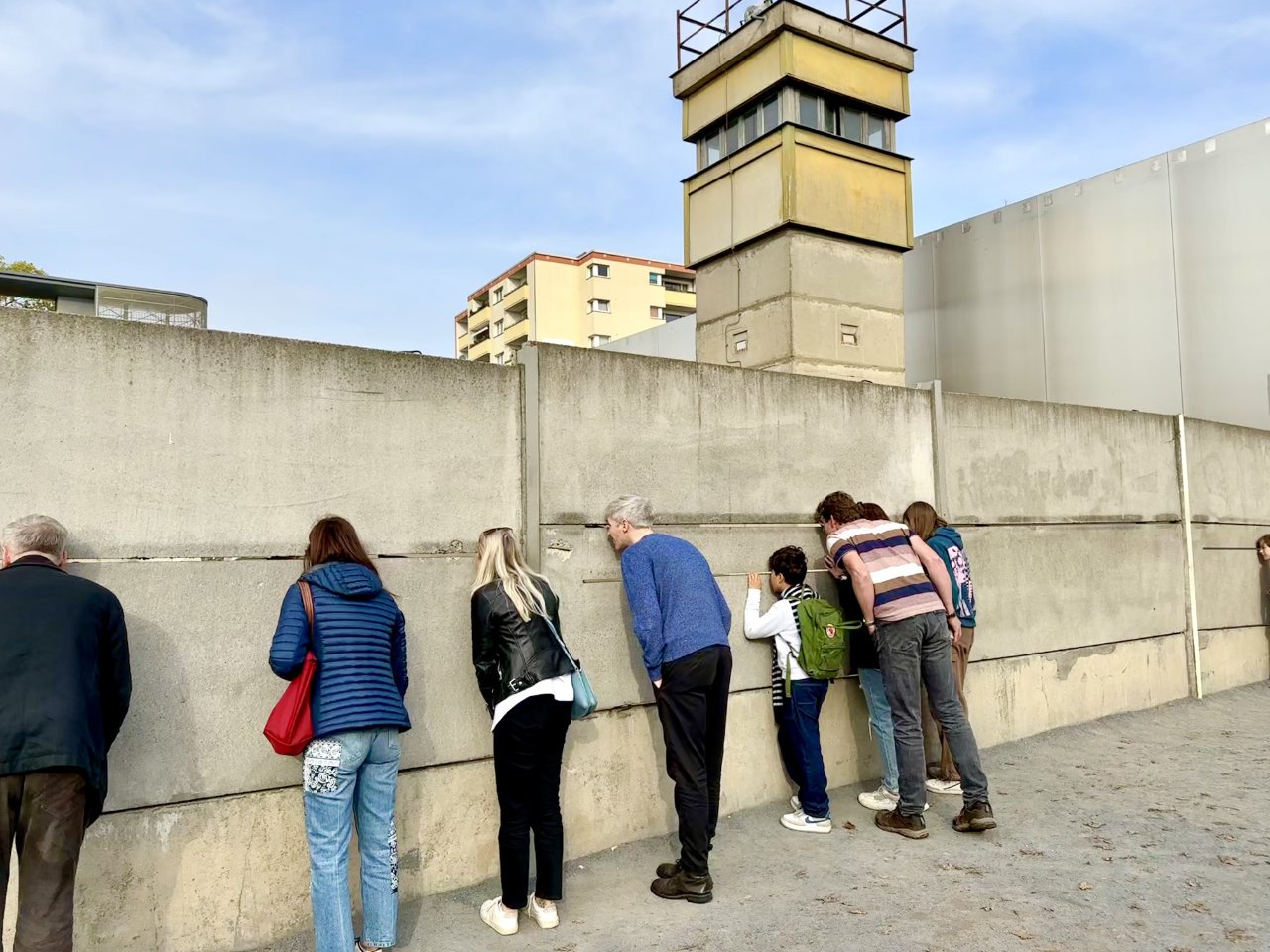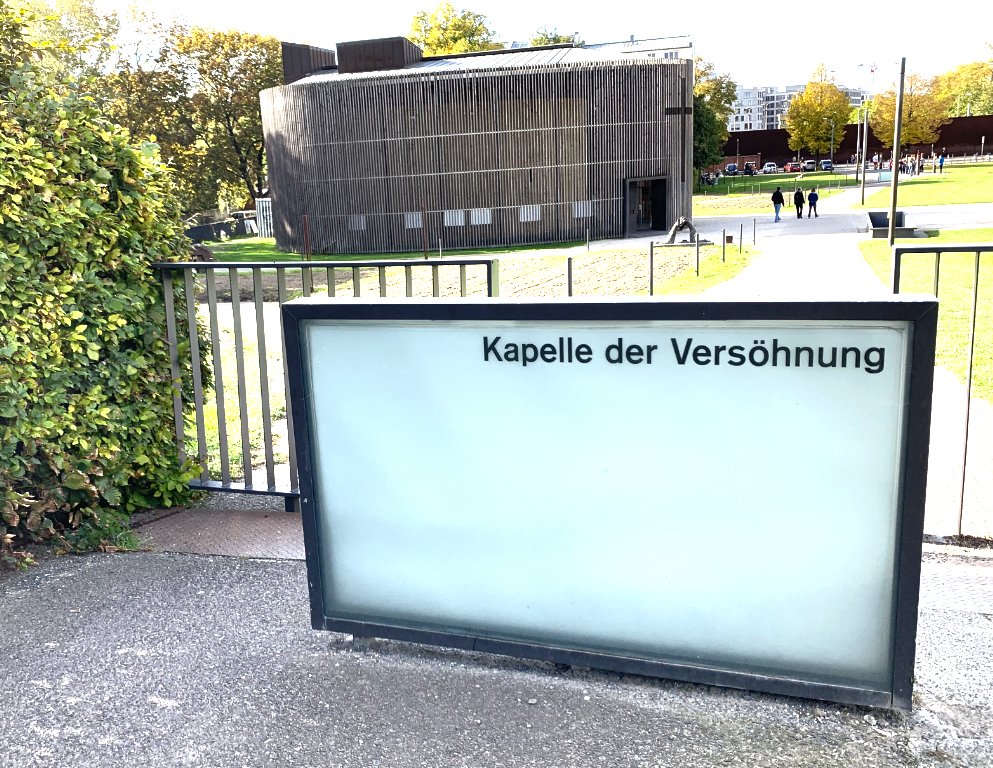Whitlam’s Self-Guided Berlin Walks: The Berlin Wall Memorial
For me, the main reason the history of the Berlin Wall is so interesting is because it happened so recently. That means the history of divided Berlin still surrounds, and nowhere more so than Bernauer Strasse where a huge stretch of the former Death Strip has been turned into a memorial. The Berlin Wall Memorial is the centrepiece of my Cold War Tour!
Where do we go?
Nordbahnhof: Ghost Stations & Escapes
Model of the Berlin Wall
Victims of the Wall
Documentation centre & tower
Chapel of Reconciliation
Tunnel 57
Conrad Schumann
How long does it take?
Depending on how much you stop to read and explore the walk will take 30-60 minutes.
But what if I want to book you as my guide, Jonny Whitlam?
I thought you’d never ask. If you’d like an in-depth private tour on the Berlin Wall and Cold War history you can book me using the button below.
Guide yourself with an interactive map
Want to make this walk as easy as possible? Guide yourself with this custom Google Map I’ve made for you.
Berlin Wall Memorial Walk #1: Nordbahnhof - Ghost Stations and Escapes
We’ll begin our walk inside Nordbahnhof station. Inside the Northern entrance to the train station is a small exhibition explaining what happened here during the Cold War. When the Berlin Wall went up, well, it had to go down beneath the ground, too. Rather than cut off all the U- & S-Bahn lines some of them stayed open, but only for West Berliners. That means trains carrying West Berliners ran under East Berlin every single day! Nordbahnhof was one of those stations. Take your time here and read some escape stories, too.
Berlin Wall Memorial Walk #2: Model of the Berlin Wall
Seriously, any museum I visit I’m always thrilled to see a model! This one is very useful as it illustrates that the Berlin Wall was very far from being a straight line. Sometimes people imagine the Wall was a perfect North-South line through the centre of the city, in reality it followed the district borders of Berlin as defined in 1920. They were never supposed to be international borders.
Berlin Wall Memorial Walk #3: Victims the Berlin Wall Remembrance Window
This wall of photographs shows 136 confirmed murdered victims at the Berlin Wall. When the memorial was opened a few years ago this was the total number of victims, but in recent years more evidence has come to light. The total now sits around 140.
Perhaps the most infamous story of death at the Berlin is that of Peter Fechter. At 18 years old, Fechter was very typical of those escaping to the West: young men. He and a friend made a run for it near Checkpoint Charlie. His friend made it, but Fechter was shot in the stomach. The East German guards left him there, bleeding death. People in West Berlin came out and called for East German guards and American soldiers to help. Fechter was eventually taken to hospital where he was announced dead on arrival.
Check out that view!
Berlin Wall Memorial Walk #4: Documentation Centre and Tower
The Documentation Centre is completely free and is filled with information and fascinating artefacts. The large bed of metal sparks, “Stalin’s lawn”, always gives me the shudders. These spikes were hidden beneath the sand in the “Death Strip”, the highly controlled shoot-to-kill zone between two walls. The idea is that after jumping over the first wall, would-be escapees would land on these huge spikes without ever knowing they were there.
Entrance to the tower is free as well. It’s a lot of stairs but the view is worth it: it really gives you a sense of the size of the Death Strip and how terrifying it must have been for Berliners on both sides of the Wall.
The Church of Reconciliation
Berlin Wall Memorial Walk #5: The Chapel of Reconciliation
For almost 25 years a complete 19th Century church sat abandoned in the middle of the Berlin Wall. This was curious to say the least, given East Germany’s ardent atheism. In the middle of the 1980s the communist regime decided they’d had enough of the church and blew it up. Almost like a cartoon, the cross flew off the top of the spire and landed on its side, bent completely out of shape. In the 2000s the recovered cross was placed next to the new Chapel of Reconciliation, a wood & “rammed earth” structure that hosts services for the victims of the Wall every Sunday.
Berlin Wall Memorial Walk #6: Tunnel 57
See those metal rectangles on the floor? They mark the location of the most successful tunnel to go under the Wall. Contrary to what you might think, most tunnels were dug from the West to the East: Westerners and Eastern refugees wanted to get their friends and family out, too! Starting from a disused bakery not far from the Wall, the tunnelers used old flour bags to move the earth out of the building, hoping not to raise suspicion from locals more to the point: guards stationed on the Berlin Wall.
On the 3rd of October 1964 the tunnelers broke through to the East. The escapees were ready. As the last East Germans were fleeing through the tunnel, border guards appeared. There was a brief firefight, and a young border guard named Egon Schulz was killed. The communist regime made sure everyone knew that the traitorous escapees were also murderers that would stop at nothing to get to the fascist West. In reality, Schulz was killed by friendly fire. This wasn’t common knowledge until after the Wall fell.
Conrad Schumann escaping to West Berlin in 1961
Berlin Wall Memorial Walk #7: The Conrad Schumann Mural
The image of Conrad Schumann jumping barbed wire to escape to West Berlin is one of the most iconic images of the Cold War. It was the cause of great celebration in West Germany: even the border guards don’t want to stay in the East! The story is actually rather sad though. Once you’d escaped to the West there was no going back. Schumann was 19 years old when he jumped over the Wall. Without thinking about the consequences he said goodbye to his family and friends, to his home, to his life. He very much regretted the decision. Even after the Wall came down he wasn’t able to reconnect with his past life. At the end of the 1990s he committed suicide.
That’s it!
I hope you enjoyed your walk and learned something along the way. I run a small, independent business and I need your help. Here’s how you can help:
Share this article with a friend
Follow me on Instagram







